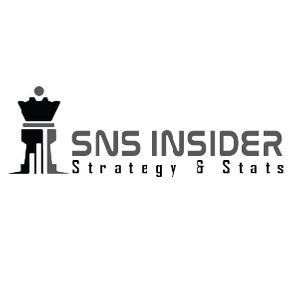Blood Screening Market by Manufacturers, Regions, Type and Application
Posted by mayur pande on April 8th, 2024
The global blood screening market has been witnessing substantial growth, driven by various factors including technological advancements, rising awareness regarding blood safety, increasing prevalence of infectious diseases, and the growing demand for donated blood. According to recent market research, the blood screening market size was estimated to be USD 2.6 billion in 2022 and is expected to reach USD 4.99 billion by 2030, exhibiting a compound annual growth rate (CAGR) of 8.5% during the forecast period of 2023-2030.
Emerging Trends and Opportunities
One of the prominent trends in the blood screening market is the adoption of advanced technologies such as nucleic acid testing (NAT) and next-generation sequencing (NGS). These technologies offer higher sensitivity and specificity in detecting infectious agents, thereby improving the accuracy of blood screening procedures. Additionally, the integration of artificial intelligence (AI) and machine learning (ML) algorithms is streamlining blood screening processes, enhancing efficiency, and reducing the risk of errors.
Another emerging opportunity lies in the expansion of blood screening programs in developing regions. With increasing healthcare infrastructure development and rising awareness about the importance of blood safety, there is a growing demand for blood screening services in emerging economies. This presents significant opportunities for market players to expand their presence and tap into underserved markets.
Get Free PDF Sample Copy of Report: https://www.snsinsider.com/sample-request/3151
Key Drivers Propelling Growth
Several factors are driving the growth of the blood screening market:
- Increasing Blood Donation Rates: The growing number of blood donations worldwide is fueling the demand for blood screening services to ensure the safety of donated blood and prevent the transmission of infectious diseases.
- Stringent Regulatory Standards: Regulatory authorities across the globe are imposing stringent regulations mandating blood screening to minimize the risk of transfusion-transmitted infections (TTIs). Compliance with these regulations is boosting the adoption of blood screening technologies.
- Rising Incidence of Infectious Diseases: The prevalence of infectious diseases such as HIV, hepatitis, and syphilis remains a significant concern globally. Blood screening plays a crucial role in detecting these infections, thereby driving market growth.
- Technological Advancements: Continuous advancements in blood screening technologies are improving the efficiency, accuracy, and speed of screening processes, driving adoption rates among healthcare providers.
Challenges and Considerations
Despite the promising growth prospects, the blood screening market faces certain challenges:
- High Costs: The initial capital investment required for implementing advanced blood screening technologies can be substantial, posing a challenge for small and medium-sized healthcare facilities.
- Limited Access to Healthcare: Inadequate healthcare infrastructure and limited access to healthcare services in certain regions hinder the adoption of blood screening technologies, particularly in low-income countries.
- Ethical Concerns: There are ethical considerations surrounding the screening of donated blood, including issues related to privacy, consent, and stigma associated with certain infectious diseases.
- Complex Regulatory Landscape: Compliance with diverse regulatory standards across different regions can be complex and resource-intensive for blood screening companies, impacting their operational efficiency.
Key Takeaways from the Market
- Focus on Innovation: Continued investment in research and development to innovate and enhance blood screening technologies will be crucial for staying competitive in the market.
- Expansion into Emerging Markets: Exploring opportunities in emerging markets and tailoring products and services to meet the specific needs of these regions will be key for market expansion.
- Collaboration and Partnerships: Collaborations between blood screening companies, healthcare organizations, and regulatory bodies can facilitate knowledge sharing, drive innovation, and promote best practices in blood safety.
- Emphasis on Education and Awareness: Increasing awareness about the importance of blood safety and the role of blood screening in preventing transfusion-transmitted infections will be essential for driving adoption rates and expanding the market.
In conclusion, the blood screening market is poised for steady growth in the coming years, driven by technological advancements, regulatory initiatives, and increasing healthcare awareness. However, addressing challenges related to cost, access, and regulation will be imperative for unlocking the full potential of this market and ensuring the safe and efficient screening of donated blood globally.
Buy This Exclusive Report: https://www.snsinsider.com/checkout/3151



